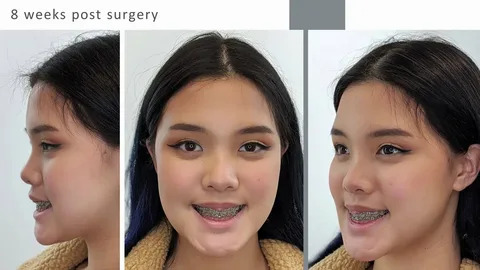Facial harmony and symmetry are the cornerstones of beauty. While makeup and cosmetic treatments can provide temporary enhancement, structural issues of the jaw often require surgical correction. Misaligned jaws, underdeveloped chins, or protruding jawlines can all significantly alter one’s facial profile.
Modern corrective surgery offers a permanent solution. Jaw Surgery in Islamabad not only resolves functional issues but also enhances facial features, creating balance and improving overall aesthetics.
This blog explores how jaw surgery enhances facial appearance, the techniques used, and why Islamabad has become a hub for transformative procedures.
What Is Jaw Surgery?
Jaw surgery, also known as orthognathic surgery, is performed to correct irregularities in the jawbone structure. These irregularities often cause problems with chewing, speaking, and breathing. Beyond these functional issues, they can also affect the harmony of facial features.
By realigning the upper jaw, lower jaw, or both, surgeons can dramatically improve both function and appearance. Unlike fillers or non-surgical treatments, the changes are structural and long-lasting.
Facial Features Improved by Jaw Surgery
Jaw surgery can enhance multiple aspects of facial aesthetics, including:
- Jawline Definition: Creates a sharper, more youthful contour.
- Chin Proportion: Corrects weak or overly prominent chins.
- Smile Balance: Reduces gummy smiles and improves symmetry.
- Cheek Harmony: Improves midface projection, giving the cheeks a natural lift.
- Overall Symmetry: Balances the left and right sides of the face.
The result is a natural, proportionate appearance that boosts confidence.
Common Aesthetic Concerns Treated
Many patients seek jaw surgery primarily for cosmetic reasons. Common concerns include:
- Recessed jaw leading to a weak profile
- Overly long or short face shape
- Crossbite or open bite altering appearance
- Sunken midface making the face look aged
- Imbalanced facial proportions between chin, jaw, and cheeks
Correcting these concerns not only restores balance but also enhances facial attractiveness.
Types of Jaw Surgery for Aesthetic Enhancement
1. Maxillary Surgery (Upper Jaw)
Repositions the upper jaw to correct a gummy smile, sunken midface, or protrusion.
2. Mandibular Surgery (Lower Jaw)
Addresses protruding or receding lower jaws, enhancing jawline structure and balance.
3. Genioplasty (Chin Surgery)
Improves the size, shape, or position of the chin to create proportion with other facial features.
4. Double Jaw Surgery
For severe asymmetry or bite problems, both jaws are repositioned. This provides the most dramatic improvements in facial aesthetics.
Technology in Modern Jaw Surgery
Specialists in Islamabad use advanced technology to ensure precise, predictable, and aesthetic outcomes.
- 3D Imaging: Helps visualize jaw structure and simulate results.
- Computer-Assisted Planning: Allows surgeons to plan movements with millimeter accuracy.
- Custom Surgical Guides: Ensure exact repositioning during surgery.
This level of precision helps patients achieve results that are both functional and visually pleasing.
Aesthetic Benefits of Jaw Surgery
Jaw surgery has aesthetic advantages that extend beyond correcting bone irregularities:
- Balanced Profile: Aligns the jaw with the nose, lips, and forehead for harmony.
- Youthful Appearance: Enhances midface projection and jawline sharpness.
- Smile Transformation: Corrects jaw-related smile issues.
- Gender Affirmation: Helps create a stronger jawline for men or a softer contour for women.
These benefits make jaw surgery one of the most transformative procedures available.
Psychological Impact of Enhanced Features
Improving facial features through jaw surgery not only changes appearance but also boosts mental well-being. Patients report:
- Higher self-esteem
- Increased social confidence
- A stronger professional presence
- Relief from long-term self-consciousness
The psychological impact is often as profound as the physical transformation.
Recovery Timeline After Jaw Surgery
Early Recovery (Weeks 1–2)
Swelling and mild discomfort are expected. A liquid diet is followed.
Mid Recovery (Weeks 3–6)
Swelling subsides, and facial contours become more visible. Patients transition to soft foods.
Full Recovery (3–6 Months)
Healing completes, and final results are visible. The jawline, chin, and overall profile appear naturally balanced.
Risks and Considerations
Like all surgeries, jaw surgery carries some risks. These may include:
- Swelling and bruising
- Temporary numbness
- Mild discomfort during recovery
- Rare complications like infection or delayed bone healing
Choosing a skilled and experienced surgeon minimizes these risks.
Why Choose Jaw Surgery in Islamabad?
Islamabad has emerged as a trusted center for corrective jaw procedures due to:
- Highly trained maxillofacial surgeons
- Cutting-edge imaging and planning technology
- Modern facilities with patient-focused care
- Affordable yet high-quality treatments
Patients can expect international standards of care while benefiting from local expertise.
Conclusion
Jaw surgery is not just about function—it is also about aesthetics. By reshaping the jawline, chin, and facial proportions, it creates harmony and enhances natural beauty. The result is a balanced, confident, and attractive appearance that lasts a lifetime.
If you are considering Jaw Surgery in Islamabad, it is vital to choose a clinic that combines expertise with advanced technology. Enfield Royal Clinics in Islamabad is a trusted name in cosmetic and corrective procedures, offering personalized care and exceptional results. With their skilled team, you can achieve enhanced facial features, improved confidence, and lasting transformation.





Comments